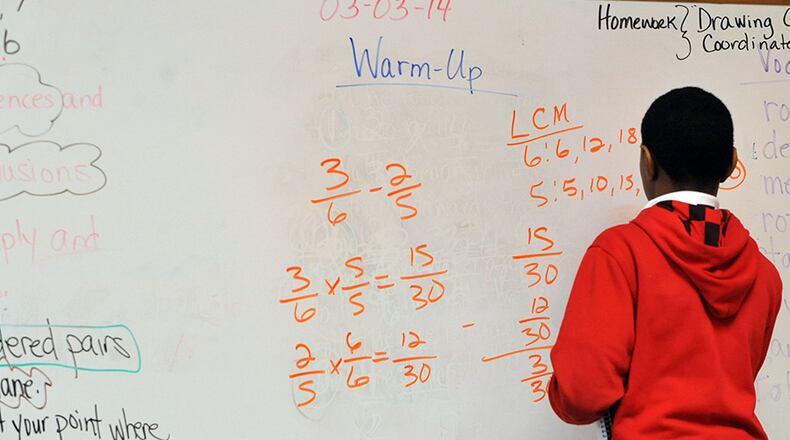A Georgia State University study has confirmed what many children and adults alike have long suspected: Life for many Atlanta Public Schools students is unfair.
The "equity audit" produced on behalf of the Atlanta schools by Georgia State researchers found disparities among schools and regions of the city in everything from spending and teacher quality to playground facilities and PTA funding.
» MORE: APS Equity Audit Report (PDF) | (Text)
The Atlanta Journal-Constitution obtained the report through an open records request.
Among the report’s findings:
Spending: The Grady and North Atlanta clusters spend less per student than the APS average. The Carver, Jackson and Washington clusters spend more per student than average.
Facilities: Nine APS elementary schools do not have playgrounds. About half of elementary schools do not have a science lab.
PTA resources: PTA membership ranged from 2 members to 800. About 40 percent of schools' PTAs reported a budget of less than $1,000, but at least one PTA had a budget of more than $170,000
Teacher experience: Students in the North Region have the most experienced teachers on average. But within that region's schools, the most academically challenged students are taught by the least experienced teachers.
Gifted students: APS identified about 20 percent of students in the East and North regions as gifted; less than 10 percent of students in the South and West regions and charter schools were identified as gifted.
Student and community characteristics: The South region had the highest percentage of households earning less than $25,000 a year; the North region had the highest percentage of households earning more than $100,000 a year.
The report, for which APS paid $24,550, did not look at the reasons behind the disparities or at how or if APS should fix them. It did not examine how Atlanta schools have changed over time. And it did not look at the funding sources, such as outside donations or federal funding, for individual schools.
In some areas, the report reflects the belief among many Atlanta parents of “two systems in one,” of students from better-off families getting more resources than those from poorer families, APS Superintendent Erroll Davis said. But the report also shows that even within a single area of the city, the resources available to each school — and how those resources are used — can vary widely. In some schools within the same cluster, for example, about a quarter of spending is on instruction; in others, that figure is closer to 60 percent.
APS commissioned the report as the start toward fixing some of those inequities, and perhaps making life a little more fair for Atlanta children. The school board plans to begin discussing the issue by this fall.
Davis, who retires June 30, recommended that the Atlanta school board adopt a policy requiring the district to address inequities and measure how well it does that. Among Davis’ top recommendations: ensure struggling students get better teachers.
“Is it appropriate that we assign our least experienced, least trained assets or teachers to our most intractable problems?” Davis said. “If you look at any other fields of endeavor, that’s not how it’s done.”
Kevin Fortner, one of the report’s authors, said, “This is more about where we should look, not what conclusions we should draw. If we want to understand the why we need to do more investigation.”
But the report does give parents a clearer, district-wide picture of how Atlanta schools operate.
“Your gut instinct might say we need to do this, whatever ‘this’ is,” said Doug Wood, whose son will attend Toomer Elementary School. “This gives you an understanding of what’s actually going on.”
Read the main report here. Tell us in the comments, by email or on Twitter: Where do you see the greatest disparities in the Atlanta Public Schools? Which area do you think needs to be fixed first? Does this report reflect what you see in the Atlanta schools?
(You can read the full, 1,396-page report--including data and appendices--here.)
About the Author
Keep Reading
The Latest
Featured


